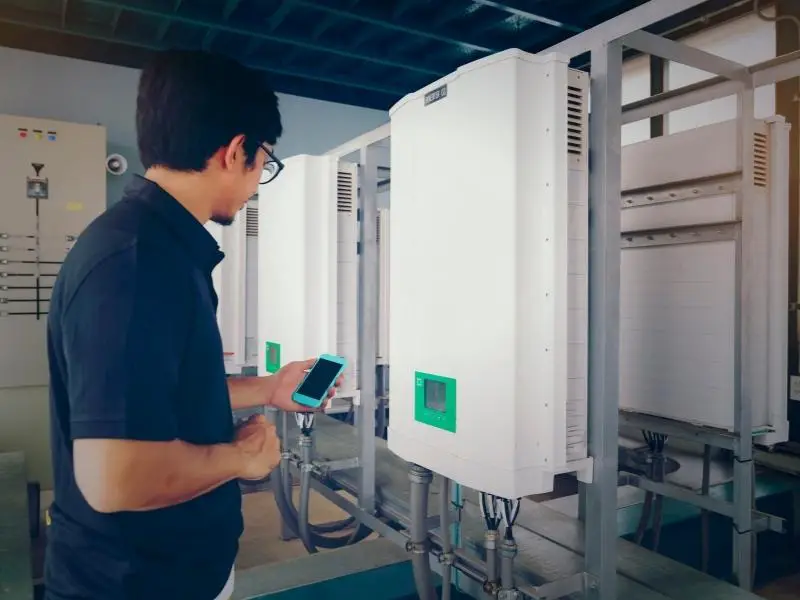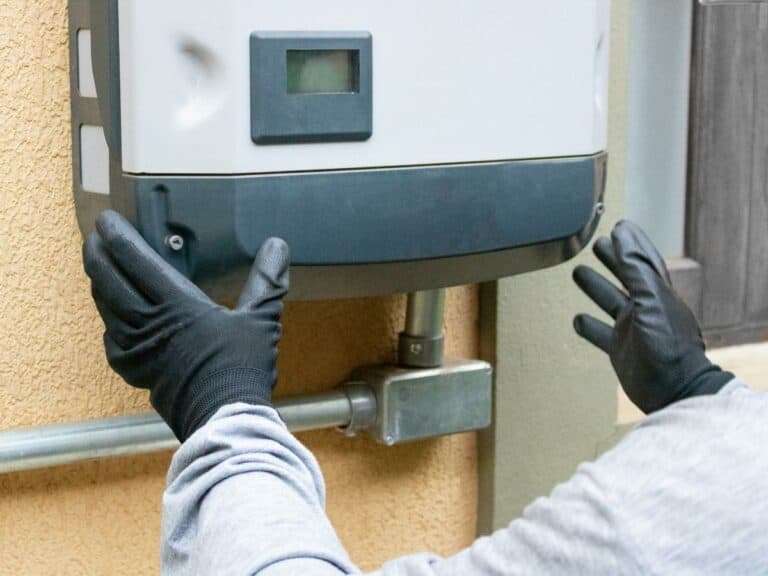Going solar is not particularly difficult. There is a learning curve you must work through to become solar savvy. All the components can be a little intimidating at first. Do you need an inverter? Do you need a charge controller? Why?
An inverter converts power from solar from DC to AC, which means you can use the electricity to run your appliances.
Here are the main components of a solar setup and what will look at to determine what you need;
- Solar Panels
- Charge Controllers
- Batteries
- Inverters
After briefly discussing each component, we will look at a few solar applications. You will see that your application will determine what components you do and do not require.

Solar Array Components and What They Do
Solar Panels
Photovoltaic panels, generically called Solar Panels, are energy collectors. They collect photons of energy from sunlight and convert it to Direct Current (DC) electrical energy.
As energy collectors, they are not well suited to act as a power source. Their output is not regulated. It fluctuates as the sun moves across the sky and as clouds pass by.
A solar array connected directly to a device would over-power the device when the sunlight was bright and then under-power the device when a cloud passed. They are not a very reliable power supply.
See also: What Is A Solar Inverter? (Explained With Examples)
Charge Controller
In a solar system, a charge controller regulates the voltage from the solar panels. By regulating the voltage and current, the controller ensures the batteries receive a full charge without overcharging.
There are two styles of charge controller available today: Pulse Width Modulation (PWM) and Maximum Power Point Tracking (MPPT) controllers. Both controllers have benefits and shortcomings.
About PWM Controllers
PWM controllers limit the voltage and current being applied to the battery. In a discharged state, most available power is allowed to pass to the battery.
As battery voltage approaches capacity, the controller reduces the current until it reaches a trickle charge to maintain the full charge state. The voltage of panels, PWM controllers, and the charged batteries must be the same.
They are suited for smaller, low-power solar systems. Some PWM controllers do have a LOAD circuit. This circuit can be used to run a small load while charging batteries.

About MPPT Controllers
These more sophisticated devices can accept nearly any input voltage from a solar array and modify it to match the battery bank voltage.
The total power from the array is accepted, and the voltage best appropriate to charge the battery is applied at the optimum current.
When the batteries approach a full state, the controller behaves much like a PWM, reducing current to the battery until they reach a trickle charge state. MPPT charge controllers are more expensive than PWM chargers, but most agree they are worth the extra cost.
Batteries
Typically, solar panels are used to charge a battery bank. In most cases, the solar array will provide more power than you use at any given time.
The DC power is stored and used to run appliances and lights as required, particularly at night. Lead-acid batteries have been the standard power storage device.
Lithium-Ion batteries have been growing in popularity. As lithium-ion batteries become more available, they will become the new standard.
Inverters
A power inverter converts direct current (DC) to alternating current (AC). AC is the type of electricity provided by the power grid. DC power is the type of electricity used in vehicles.
You will not need an inverter if your device can run on DC power. There are two basic types of inverters: Modified Sine and True Sine wave inverters.

Types Of Solar Inverters
Modified Sine Inverter
Modified sine inverters have been used as a power conversion device for many years. A well-built unit will provide many years of reliable service.
The wave they produce can negatively affect more sensitive electronic devices. Their relative simplicity makes them rugged and less susceptible to input power fluctuations.
True Sine Inverter
True sine inverters are a reasonably new player in the solar power field. For many years they were prohibitively expensive to most homeowners. Their popularity has driven prices down to reasonable levels in the past few years.
A high-quality unit will provide AC power that is cleaner than grid power. They can power even the most sensitive electronic devices.

Deciding What Components You Need For A Solar Setup
You must first decide your goal to determine what components you will need. We will look at a few scenarios.
Running a small device directly from panels
If you have a small DC device that you plan to run only during daylight hours, you can do it with just a few components. For example, a 12-volt pond pump could efficiently be run with direct solar.
You will need to know the power requirement of the device in watts. The 12-volt solar panel you choose will need to provide at least the watts required by the device.
You will also need a charge controller with a LOAD circuit or a 12-volt voltage regulator to maintain the proper voltage. Most 12-volt panels will produce nearly 15 volts at maximum output.
This voltage may damage the device. By adding a 12-volt battery wired to the BATTERY circuit of the charge controller will enable the pump to run 24 hours a day.
RV solar system
Often an RV, camper, or small cabin will run on 12-volt DC power. If you only want to run some lights and maybe a radio or tv, 12-volt power will do the trick. The setup would be about the same as the pump scenario.
The main difference is the amount of power. RVs often use 250 to 500 watts of solar power, charging a small bank of batteries through an appropriately rated charge controller.
Remember, any devices you plan to power will need to be 12-volt devices. With an inverter installed after the batteries, you could use standard 120-volt AC devices.
Off-Grid system
Most whole-home solar arrays are 24 or 48-volt DC systems. Grid-Tie systems are even higher voltage. Such systems will require at least 1000 watts of solar panel power.
This power would use a large MPPT charge controller to power a large battery bank. A 2500-watt inverter (or larger) would provide AC power to the home.



